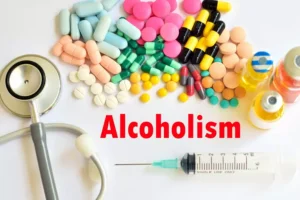A Day in the Life of Older Adults: Substance Use Facts CBHSQ Data

Sharing information that is specific to older clients, such as guidelines about low-risk levels of substance use for older adults or physical effects of substance misuse. When doing an SUD screen, if the depression screener is negative but the client has some symptoms of depression, you will want to give another depression screen in 1 month. Symptoms to look for include low mood, substance abuse in older adults difficulty making decisions, loss of interest in pleasurable activities, and feelings of hopelessness. You may want to give another depression screen earlier if the client reports worsening symptoms or if the client seems to be feeling worse. If the depression screen is negative and the client has few or no symptoms of depression, you can continue screening on a yearly basis.

Substance Use in Older Adults DrugFacts
BZD use disorder, specifically, needs to be medically supervised with a slow taper spanning at least four weeks.3 See table 2 for more information about the pharmacologic treatment. Worldwide, there are national alcohol rules in existence in 66 nations. Aside from Bangladesh, Indonesia, and the Maldives, three Muslim nations in Southeast Asia where alcohol drinking is either entirely or partially prohibited in accordance with Islamic belief.
- This section specifically focuses on assessing and promoting health and wellness for older adults in recovery.
- Heroin is a natural opioid made from the opium poppy plant that is turned into a fine powder or black sticky substance.
- The bi-variate and binary logistic regression analyses were carried out to predict the association between non-communicable diseases and substance use adjusting select socio-demographic characteristics.
- To find organizations that offer a licensed CDSMP, go to /evidence-based/map-of-programs.
The Silent Struggle: Addiction in the Golden Years

Substance use is defined as the consumption of any psychoactive substance, such as tobacco, alcohol, or drug (legal or illicit drugs) other than those for medical use [11]. Previous literature found that substance consumption is one of the main factors for the burden of disease, disability, premature death, and non-communicable diseases (NCDs) among older adults. In most countries, it is a significant public health issue and is a challenging element of the overall healthcare system [12, 13].
Service Utilization
As we age, our medicine cabinets tend to fill up with various pills to manage chronic conditions. Unfortunately, this easy access can lead to misuse, especially with potent painkillers or anxiety medications. What starts as a doctor’s order can quickly spiral into a dangerous habit. It’s a harsh reality that many of us would rather not confront, but it’s one that deserves our undivided attention. The quiet epidemic of addiction among older adults is a growing concern that challenges our preconceptions about aging and forces us to reconsider how we care for our elders. Those living with substance abuse generally have more control over the situation, often drinking or using drugs to deal with stress.
- Lehmann points out that it’s common for primary care providers, specialists and emergency physicians to prescribe opioids and benzodiazepines on a long-term basis.
- If unable to attend classes in person, Silver Sneakers members can access online exercise videos on the website or use an online app to tailor their exercise program and track healthy living goals.
- No single service provider or setting is solely responsible for making sure older adults receive the substance use-related care they need.
- Many older clients have chronic medical illnesses and take more than one prescription medication.
Use screening and assessment tools that have been well researched and approved for use with older adults. Explain what will take place during and after the screening and assessment so that the individual knows what to expect. Living in the home with someone who misuses substances or has a mental disorder. These include arthritis and pain medications, depression medications, blood thinners, antiseizure medications, and sleep medications. The SMAST-G is the first brief alcohol misuse screener developed for older adults.

Co-Occurring Psychiatric Disorders
She became the General Service Representative of her home AA group and sponsored many members over the years. Ruth frequently tells people that “smoking is a bad habit I picked up at meetings.” She recently stopped after she was diagnosed with chronic obstructive pulmonary disease (COPD). Ruth’s pulmonologist referred her to counseling at the hospital’s outpatient https://ecosoberhouse.com/ program given her score of 12 on the Patient Health Questionnaire, indicating moderate depression. (Chapter 3 of this TIP offers screening and assessment tools.) She also was not following instructions for managing her COPD. As people age, many sooner or later have problems completing everyday tasks on their own, like bathing, cooking, shopping, and driving.

- This will give you a more complete picture of your clients’ substance-related issues and will help you understand how substance misuse affects them.
- The line between pain management and dependency can blur, especially when dealing with powerful prescription medications.
- The many screening tools approved for use with older adults can help you detect substance misuse.
- Instructions for how to give the Timed Up & Go are available online (/steadi/pdf/TUG_Test-print.pdf).